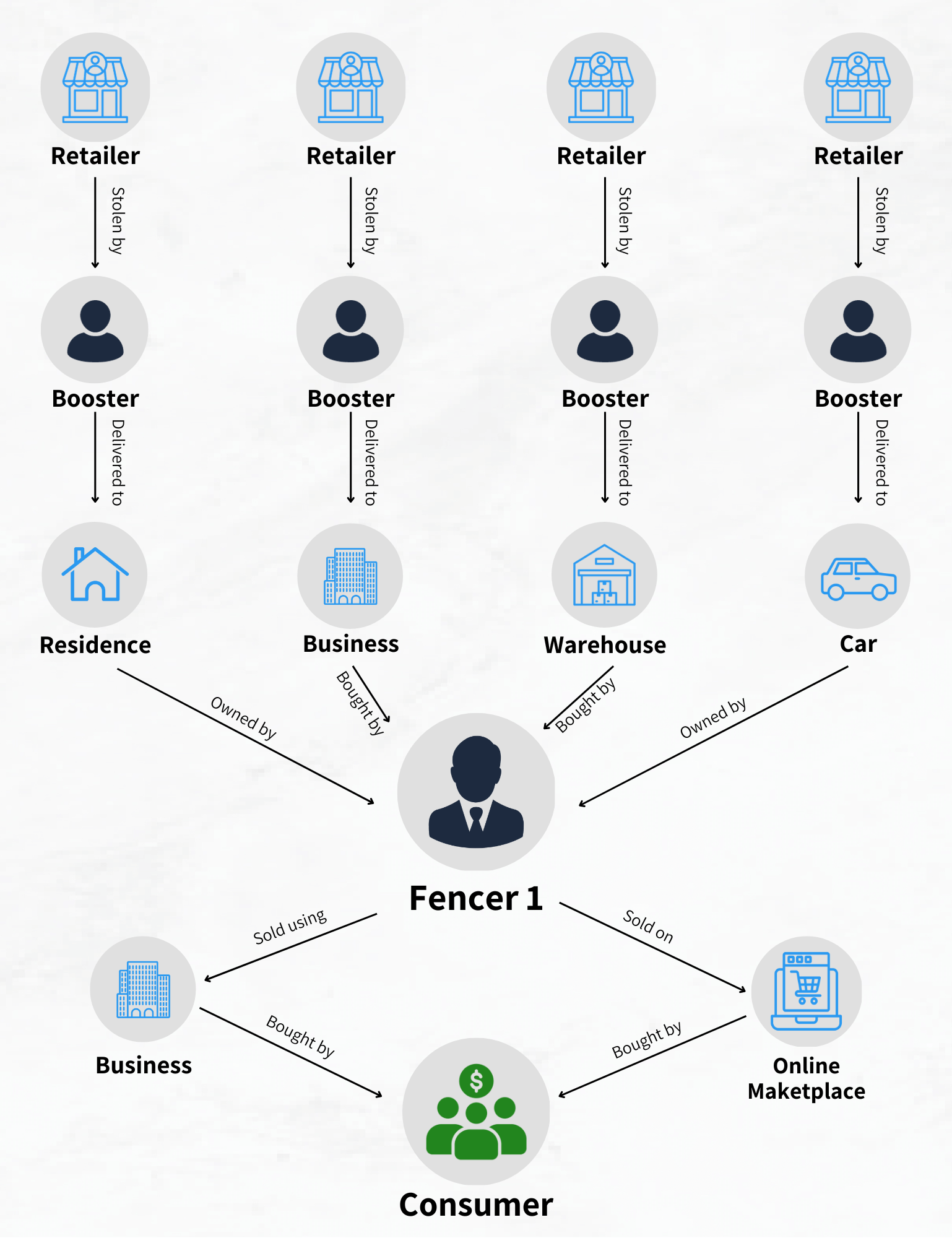Threat Analysis
The Organized Retail Crime (ORC) Research Series:
The Fencers: The Lynchpin of Organized Retail Crime Enterprise
Executive Summary
Criminal fencers—individuals who knowingly buy stolen merchandise to resell for profit—are often the lynchpin of an Organized Retail Crime (ORC) enterprise’s strength and longevity. The lifespan of an ORC enterprise is dependent upon a fencer’s ability to recruit boosters—individuals who shoplift items—direct stealing operations, and turn stolen goods into a profit. Fencing operations and booster recruitment have magnified the ORC issue in recent years, with ORC contributing to more than $68 billion lost from stolen goods. (See source 1 in appendix)
We provide this overview on fencers—particularly before the holiday season—to inform consumers and retailers of how to identify potential interactions with fencers online and protect themselves from the growing issue of ORC.
Background of Organized Retail Crime
Organized Retail Crime is the large-scale theft of retail merchandise with the intent to resell the items for financial gain. It harms major and minor retailers through product theft, as well as unwitting consumer victims who are usually unaware of the purchase’s origin. ORC is separate from typical shoplifting committed by individuals stealing goods for personal use. To acquire products, an ORC enterprise typically steals large quantities of merchandise from stores or cargo locations to resell online, at independent locations, or through other retailers. (See source 2 in appendix) Fencers then sell products for approximately 50% to 80% of market value, judging from multiple ORC-associated cases that sold various product types. (See source 3, 4, and 5 in appendix) Because of the preferred online sale of stolen goods, ORC enterprises regularly ship products across state lines or even operate internationally.
According to the National Retail Federation, retailer loss rose from $94 billion in 2021 to $112 billion in 2022 and was primarily driven by theft. (See source 6 in appendix) Within the last six months, major retailers have cited ORC as significantly affecting company performance, increasing concerns about employee safety, and influencing company considerations for store closures. (See source 7 and 8 in appendix) ORC theft causes ripple effects that ultimately harm consumers in communities who rely on access to stores in those locations, as retailers often must raise prices to counteract retail theft losses. (See source 9, 10, and 11 in appendix)
What is “Fencing?”
Criminal fencers are individuals who knowingly buy stolen merchandise to resell for profit. The success and endurance of ORC relies on the fencer’s ability to sell stolen merchandise to consumers who are either unwitting or apathetic to the product’s origin and acquisition. A review of court cases showed fencers are often the top individuals in smaller or less complex enterprises, while larger enterprises may involve senior individuals who help divert and “clean” stolen goods before resale.
Fence – noun
Thieves’ slang for someone meaning to buy or sell goods with criminal intent. First used in England in the 1800s, the word may be derived from the word “defence,” as they helped boosters and other thieves avoid being caught while giving them a ready place to sell their stolen wares.
Individuals who acted as fencers in ORC enterprises represent a wide range of demographics. In our review of ORC-associated criminal cases, fencers consisted of both male and female individuals who were generally in their thirties or forties. Race, countries of origin, regional location, profession, and other traits were widely represented.
Many fencers in ORC enterprises consist of teams of family members, including combinations of spouses, siblings, adult children, and parents. (See source 13, 14, 15, 16, 17, and 18 in appendix) The use of familial relationships centralizes trust and eases overall coordination. It also simplifies the use of family residences or businesses for storing and shipping stolen goods.
DISCLAIMER:
The reporting contained herein from the Nisos research organization consists of analysis reflecting assessments of probability and levels of confidence and should not necessarily be construed as fact. All content is provided on an as-is basis and does not constitute professional advice, and its accuracy reflects the reliability, timeliness, authority, and relevancy of the sourcing underlying those analytic assessments.
About Nisos®
Nisos is The Managed Intelligence Company®. Our analyst-led intel investigations, assessments, and monitoring services empower your security, intelligence and trust and safety teams. We provide accurate, customized intelligence that guides your security and risk decisions – protecting your organization, assets, and people. Learn more at nisos.com.

